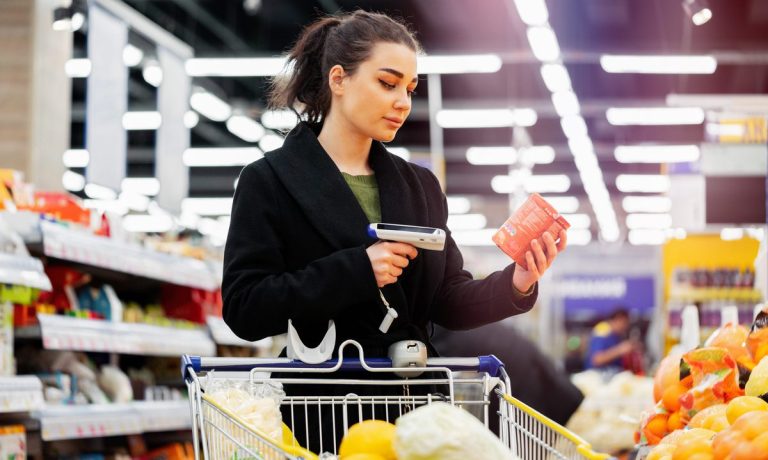
As digital technologies have taken over the grocery industry, shoppers’ payment expectations are dramatically different than they were even three years ago. Now, stores that don’t adapt to meet these evolving demands are putting themselves at risk of falling behind the competition.
But here’s the rub: Not all shoppers are looking for the same features.
Madeline Aufseeser, global omnichannel grocery leader at ACI Worldwide, which provides electronic payments solutions for more than 6,000 organizations around the world, spoke with PYMNTS about how grocers are reexamining their relationships with customers through a payments lens.
The past decade has seen new payment types proliferate, Aufseeser said. Ten years ago, grocery customers typically just swiped their credit or debit cards at the terminal, Now, contactless payments are common, and some grocery chains have even started experimenting with cashier-less technology that allows customers to skip the checkout line altogether.
“So you have all these new ways of paying,” she said, “and you have all these new tender types.”
In an eBook titled “Who’s Shopping at Your Store? The five new grocery-buying personas and how to win them over,” based on data from a 2021 PYMNTS study created in collaboration with ACI Worldwide, the software company outlined five distinct types of grocery customers, noting that each group comes to the store with different expectations for their retail journeys.
Get the study: What Consumers Expect From Their Grocery Shopping Experiences
Bringing It All Together
Two of these groups — the Multi-mixers, who look for a range of different kinds of products at the store, and the Loyalists, who tend to shop with one grocer rather than a range of merchants — are looking for more than just a tap of the credit card at checkout.
“Consumers are going to want to use a mix of different payment types,” Aufseeser said of Multi-mixers.
For instance, a given shopper might cut out a paper coupon, select a digital coupon, pay with the remaining value of a gift card, use loyalty points and then pay for the rest of the purchase with a credit card. Similarly, Loyalists may be used to interacting with their favorite brand across all possible channels, and as such, they may expect seamless integration.
Data, Analytics Transform CX
Before implementing any efforts in product mix towards discounts or rewards, it’s crucial to understand your customers through payments data and analytics that can provide more insights about the behavior patterns such as which products, which stores and what time of the day resonates the most with these personas.
“As the technology changes,” Aufseeser said, “merchants really have to think about all these multiple tender types that are coming to the surface and how consumers want to use all those various tenders in the same checkout process.”
The Need for Speed
On the other hand, for some grocery shoppers, a mix of different payment methods would run counter to their goal of getting through their shopping trip as quickly as possible. These shoppers — are the Self-servers, who look for the quickest checkout options at the store, and Convenienistas, who tend to shop online to fast-track the process.
Aufseeser noted that Self-servers tend to seek out kiosks, grab-and-go technology like cashier-less checkout and buy online, pickup in-store (BOPIS) options. To reach Convenienistas, meanwhile, Aufseeser suggested that grocers offer features that streamline the shopping experience such as automatically loading items into a shopping cart from shoppable recipes and meal plans.
“Being connected to that digital experience is going to be really important,” Aufseeser said.
In the Palm of Your Hands
Finally, there are the Appsters, those who expect to have the commerce experience simplified by their smartphones.
Aufseeser explains that mobile loyalty programs are a key component of that experience, adding that ACI uses its “omni-tokens” to link purchases across disparate channels and payment methods back to a single consumer. With this service, the company is able to offer more personalized offers, which, Aufseeser contends, is especially effective for Appsters, given that they are “on their phone all the time … just waiting for that offer to pop up in front of them.”
In fact, research from the PYMNTS and ACI study finds that online grocery shoppers are more likely to use their smartphones to place their orders than to use laptops or desktop computers. In fact, 55% of eGrocery shoppers make their purchases through mobile devices and 22% use mobile wallets such as Apple Pay or Google Pay.
With the proliferation of payment methods and tender types, Aufseeser added, it is especially challenging for grocers to build simple customer payment and shopping journeys that create compelling in-store experiences, compared with online channels.
“With [these new technologies] come new rules, new laws, and new ways to operate the systems,” Aufseeser said. “We’re working to help our clients solve that orchestration … of all those different payment types and all those client journeys, and I think you’re going to see more and more of that come to the forefront.”